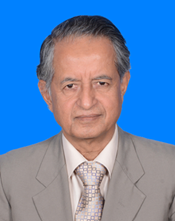Research Grant 2022-2023
|
Research Topic:Development and Application of tools coated with Physical Vapour Deposition (PVD)
|
||
|
Problem Statement:
A preliminary study of the existing literature showed that not much significant work has been done on developing relationship between PVD (Physical Vapour Deposition) coating thicknesses and coating process parameters. Furthermore, there has been not much effort on development of empirical models of coating thickness based on processing parameters and consequently lack of efforts on optimization of coating thickness. The influence of coating thickness on machining performance in various machining applications needs to be identified in order to select appropriate coating parameters to ensure desire machining performance. Thus, there exist significant gaps in research that need to be addressed. |
Fund Allotted:8,73,025
|
|
|
Objectives:
The objectives of the study are: 1. To conduct PVD coating on tools to improve their cutting performance in terms of cutting efficiency, life of tool and surface finish of machine parts. 2. To investigate the effect of coating time and other coating parameters on PVD coating thickness on tool substrates. 3. To investigate the effect of PVD coating thickness and cutting parameters on machining performance of PVD coated tools in high speed machining of difficult-to-cut materials, such as, Inconel 718 and hardened steel AISI H13. 4. To develop models of Surface roughness and Tool wear as functions of cutting parameters and coating thickness. 5. To optimize the coating and machining parameters using Response Surface Methodology (RSM) and Genetic Algorithm (GA). 6. To promote application of PVD coated tools in the local industries. |
Duration:01 year
|
|
|
Expected Outcomes:
The outcome of this research are as follows: 1. Coating of Tungsten Carbide tools utilizing of the PVD coating facility available at Tool Institute of BITAC for increasing productivity and cutting efficiency of the tools in machining metals and alloys including difficult-to-cut alloys ensuring better surface finish and longer tool life. 2. Development of model(s) of coating thickness as function of PVD coating parameters. 3. Development of models of surface roughness and tool wear as functions of PVD coating thickness and machining parameters for difficult-to-cut metal and alloys. 4. Development of optimum thickness for achieving minimum possible surface roughness and tool wear. |

